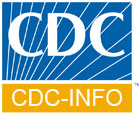Skip directly to the search box, site navigation, or content.
Division of Foodborne, Bacterial and Mycotic Diseases (DFBMD)
Candidiasis
Clinical Features
Oropharyngeal infection (OPC): white mucosal patches. Vulvovaginal infection (VVC): pruritus, vulval erythema, with or without discharge. Systemic infection usually presents as fever and chills unresponsive to antibacterial therapy. May manifest as renal or hepatosplenic infection, meningitis, endophthalmitis, endocarditis, osteomyelitis and/or arthritis.
Etiologic Agent
Candida albicans and C. glabrata. Less commonly, C.tropicalis, C. parapsilosis, and C. krusei. Rarely, other Candida species.
Resovoir
Forms part of the normal microbial flora of the mouth and gastrointestinal tract.
Incidence
Fourth most common cause of nosocomial bloodstream infections. Incidence is 8 cases per 100,000 in the general population. Higher incidence among neonates and African-Americans. OPC used to be a common opportunistic infection in HIV-infected persons (prior to the introduction of highly active antiretroviral therapy [HAART]).
Sequelae
None with appropriate antifungal therapy. Mortality rate is almost 50% with bloodstream and disseminated infection.
Transmission
Most infections are endogenous in origin, but organisms can be transmitted on the hands of care givers.
Risk Groups
Invasive disease occurs in critically ill patients in intensive-care units, in persons with severe granulocytopenia, and in hematopoietic stem cell and organ transplant recipients. OPC can be associated with HIV infection. VVC is often associated with pregnancy, diabetes mellitus, and antibiotic therapy.
Surveillance
Nosocomial disease surveillance is conducted by NHSN in selected hospitals. Active population-based surveillance for candidemia is being conducted in selected U.S. sites.
Challenges
Identifying modifiable risk factors for disease in immunocompromised and debilitated persons. Developing sensitive and specific methods for earlier diagnosis. Determining which risk groups may benefit from chemoprophylaxis.
Opportunities
Development of rapid antigenemia and antigenuria tests and molecular probes may facilitate earlier clinical diagnosis. Availability of molecular typing methods may assist in epidemiologic studies.
Content Source: National Center for Zoonotic, Vector-Borne, and Enteric Diseases (ZVED)
Program Contents
Contact Information

